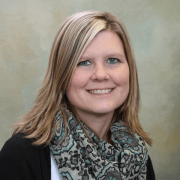What Can YOU Design?: Innovative Thinking in Medical Education
MedEdPearls June 2018: How might Design Thinking be used in medical and health professions education to address challenges such as curriculum development, patient care, or physician wellness?
The American Association of Colleges of Osteopathic Medicine annual conference was packed full of thought-provoking sessions, including an interesting discussion on Design Thinking.
Design Thinking is a human-centered approach to innovation. It involves five steps: discovery, interpretation, ideation, experimentation, and evolution; and has multiple applications. In medical education, it can be used to tackle new approaches to curriculum design, determine ways to improve patient care (e.g. clinical processes, devices or services), improve patient care techniques (e.g. interviewing skills), or improve personal care (e.g. wellness and physician burnout). How is design thinking impactful? It emphasizes the importance of the end user (what they want/need or like/dislike) and the use of teams (with varying backgrounds) and multiple data sources to develop solutions.
There are some great examples of its use at medical schools like the Sidney Kimmel Medical College, Penn State College of Medicine, and University of Virginia School of Medicine.
Learn more about Design Thinking in medical education through the resources below and share your Design Thinking insights at #MedEdPearls.
References
- Basil Badwan, Roshit Bothara, Mieke Latijnhouwers, Alisdair Smithies & John Sandars (2017) The importance of design thinking in medical education, Medical Teacher, 40:4, 425-426, DOI: 10.1080/0142159X.2017.1399203
- Michael Gottlieb, Emilie Wagner, Alexei Wagner, Teresa Chan (2016) Applying Design Thinking Principles to Curricular Development in Medical Education, AEM Education and Training, 1:1, 21-26, DOI: 10.1002/aet2.10003
About the MedEdPearls Author

Machelle Linsenmeyer
EdD, NAOME
- Assistant Vice President for Institutional Effectiveness and Academic Resources, West Virginia School of Osteopathic Medicine
- Jean Bailey, PhD – Virginia Commonwealth University School of Medicine
- Carrie Bowler, EdD, MS, MLSCM (ASCP) – Mayo Clinic School of Continuous Professional Development
- Kristina Dzara, PhD, MMSc (Educators ’16; Assessment ’16; HCE 2.0 ’17) – Saint Louis University School of Medicine
- Shanu Gupta, MD, SFHM – University of South Florida Morsani College of Medicine and Tampa General Hospital
- Jennifer Hillyer, PhD – Northeast Ohio Medical University
- Larry Hurtubise, PhD, MA (HCE 2.0 '16) – The Ohio State University
- Anna Lama, EdD, MA – West Virginia University School of Medicine
- Machelle Linsenmeyer, EdD, NAOME (Assessment ’07) – West Virginia School of Osteopathic Medicine
- Skye McKennon, PharmD, BCPS, ACSM-GEI – Washington State University Elson S. Floyd College of Medicine
- Rachel Moquin, EdD, MA – Washington University School of Medicine
- Stacey Pylman, PhD – Michigan State University College of Human Medicine
- Leah Sheridan, PhD – Northeast Ohio Medical University
- Lonika Sood, MBBS, MHPE – Washington State University Elson S. Floyd College of Medicine
- Mark Terrell, EdD – Lake Erie College of Osteopathic Medicine
- Stacey Wahl, PhD – Virginia Commonwealth University School of Medicine
Harvard Macy Institute
Harvard Macy Institute
The Harvard Macy Institute educates, connects, and serves health care leaders around the globe by providing advanced faculty development programs, thought leadership, and impactful networking opportunities.
6 Programs

